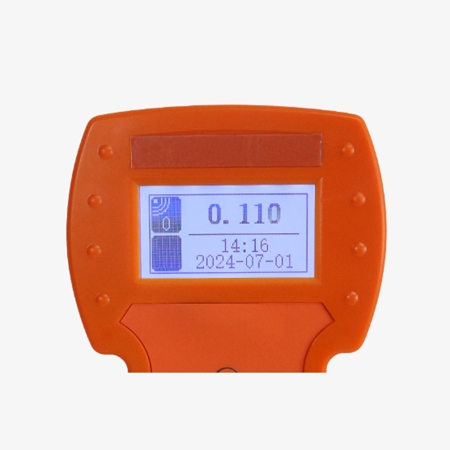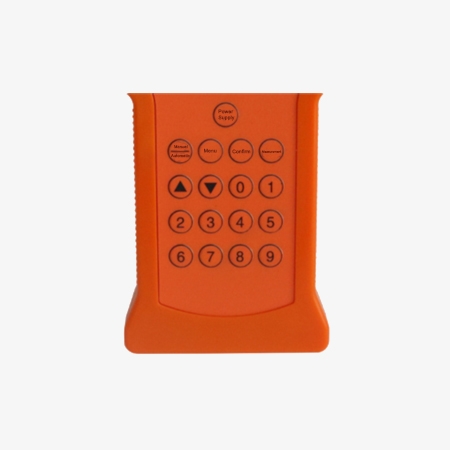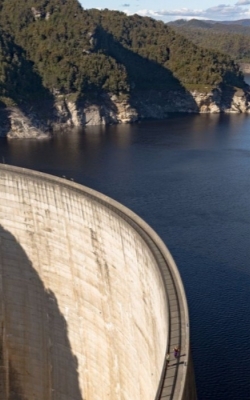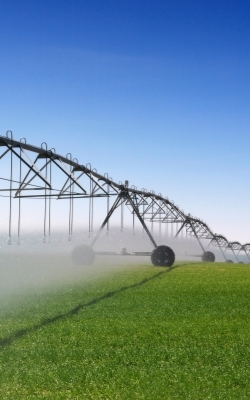This portable ultrasonic depth meter is a high-precision, highly reliable professional instrument designed specifically for water depth measurement. It is suitable for depth measurements in various water bodies, including reservoirs, lakes, rivers, and shallow seas.

Precise and Wide Range
- Precise Measurement with a Wide Range: It offers high accuracy of ±0.5% and a minimum display resolution of 1 mm. With a range of 100 to 500 meters, it meets diverse measurement needs, from shallow to deep waters.
- Portable, Durable, and Intelligent Operation: The device features a handheld design and a portable aluminum case. The main unit is made of ABS engineering plastic, and the sensor is made of metal, making it sturdy and durable. The device features an LCD with a numeric keypad and supports both automatic and manual measurement modes, allowing for quick measurements right from the start.
- Powerful and Convenient Data Management: It supports SD cards up to 32GB of storage and automatically saves measurement data in date-based CSV format for easy analysis and processing on a computer. It also provides a data calibration function, allowing you to adjust measurement results using base values and coefficients.

Advanced Measurement Technology
- Flexible and Adjustable Parameters: The user can flexibly configure key parameters, including operating frequency, storage interval, communication baud rate, and device address, through a menu system. An optional GPS function is available for recording measurement locations, meeting the needs of specialized and diverse measurement scenarios.
- High Environmental Adaptability and Reliability: The device operates in a wide temperature range (-40°C to 70°C) and can stably measure in water velocities up to 5 m/s. It utilizes 32 levels of transmit power and automatic gain adjustment technology to effectively handle complex water conditions, with a battery life of approximately 12 hours.
- Advanced Technology and Optimized Details: Self-stabilizing measurement and fast tracking technology ensure reliable results. Automatic blind spot detection (0.5 meters, manually adjustable) effectively reduces near-end measurement errors and ensures data accuracy.
Applications
The use scenarios of water level meters cover multiple fields such as industry, water conservancy, environmental protection, and energy. Its applications are diversified according to the characteristics of the measuring medium, environmental requirements, and functional requirements.

Dam

Hydroelectric Power Station

Water Tank

Agricultural Irrigation
| Model | SISCO-WDM-RMCSL01 |
| Range | 100, 150, 180, 200, 300, and 500 meters |
| Blind Zone | Automatic detection blind zone: 0.5m (manually adjustable) |
| Minimum Display Resolution | 1mm |
| Operating Time | Approximately 12 hours |
| Power | Transmit power: 32 levels, automatic gain adjustment |
| Accuracy | ±0.5% |
| Operating Frequency | 200-2000KHZ |
| Display | LCD |
| On-site Settings | Controlled by sensor buttons |
| Power | Transmit power: 32 levels, automatic gain adjustment |
| Calibration | Factory calibrated, field calibration possible |
| Operating Voltage | Built-in battery, external charger |
| Keyboard | Physical Specifications: Digital buttons |
| Material | Main unit: ABS engineering plastic, Sensor: copper or stainless steel |
| Sensor Cable | Wire diameter: 5-10mmx10m |
| Operating Humidity | <80% RH, non-condensing |
| Operating Temperature | -40°C~70°C |
| Detection Method | 15Hz/s |
| Weight | 1kg |
Q1: How to Read a Water Level Gauge Correctly?
A1: The key to reading a water level gauge correctly is to first check the device status and environmental conditions to ensure there are no interference factors, then use the corresponding method according to its type (such as glass tube, float type, pressure type or radar/ultrasonic) to read it, usually by looking directly or viewing the display, paying attention to the units and decimal points; at the same time, make sure the device is calibrated, and pay attention to factors such as bubbles and dirt that may affect the accuracy of the reading. Finally, record the reading and do daily cleaning and maintenance to ensure the reliability of the measurement results and the life of the equipment.
Q2: How to Calibrate a Water Level Meter?
A2: The water level meter calibration needs to be completed in a static water body. First, place the probe into a known depth (such as 0cm or standard water level) to adjust the zero point, then calibrate the range by comparing the actual water depth, and set compensation parameters according to the water temperature to eliminate thermal expansion and contraction errors. After completion, record the calibration data and recheck it regularly (such as monthly) to ensure measurement accuracy.
Q3: Common Operational Errors When Using Water Level Meters
A3: Common operational errors when using water level meters include improper installation, neglect of calibration, and neglect of environmental factors. For example, when installing the probe tilted or close to the inlet/outlet, the measured value may be too large or too small, or even fluctuate unstably; failure to perform zero point calibration or neglecting that the medium density does not match the device setting value may cause inaccurate readings.
Tips: Are Water Depth Meters More Suitable for Field Surveys?
Water depth meters are ideal for field surveys. They are typically designed to be highly portable (such as handheld or portable on small boats) and battery-powered, making them ideal for field work without mains electricity. They utilize ultrasonic technology for rapid, non-contact measurement, providing instant readouts and significantly improving field work efficiency. Furthermore, these instruments are highly adaptable to various environments, including rivers, lakes, and reservoirs, providing efficient and reliable depth data for hydrological surveys, resource exploration, and field exploration.
Thank you for buying industrial test and measurement equipment on SISCO.com, all products sold by SISCO and the partner cover a 12 months warranty, effective from the date of receiving the products.
What is covered?
SISCO is responsible for providing free spare parts, and free technical support to assist the customer to repair the defective products until the problem is solved.
What is not covered?
- Product purchased from anyone other than a SISCO store or a SISCO authorized reseller.
- Expendable parts.
- Routine cleaning or normal cosmetic and mechanical wear.
- Damage from misuse, abuse or neglect.
- Damage from use of parts other than SISCO approved.
- Damage from use outside the product’s usage or storage parameters.
- Damage from use of parts not sold by SISCO.
- Damage from modification or incorporation into other products.
- Damage from repair or replacement of warranted parts by a service provider other than a SISCO authorized service provider.
- Damage caused by the application environment not meeting the product usage requirements and the failure to perform preventive maintenance.

